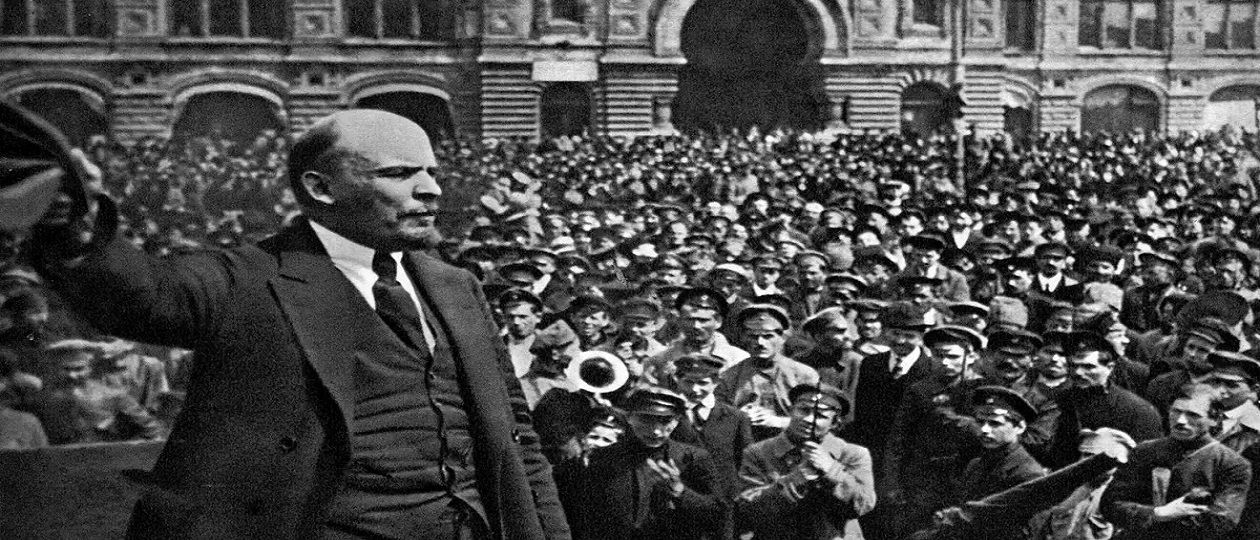
Comparing the Russian Revolutions of 1905-1907 and 1917-1922 to other revolutions in different countries and regions has its risks.
In general, it is safest to set the Russian revolutions in the entire history of European revolutions beginning with the revolution of 1768 in Geneva, Switzerland and finishing with the Russian Revolution of 1917-1922.
Although revolutions happen under specific historical circumstances in different countries and regions during different time periods, they often have huge elements of similarities and differences. [1] In some cases the differences are far greater than the similarities between the revolutions. Thus, comparing the Russian Revolutions to revolutions in different continents or in different time periods can become an exercise in comparing apples and oranges.
One of the first major attempts to compare several revolutions was done by Harvard University professor Crane Brinton in 1938 with the publication of his book The Anatomy of Revolution. This book has been republished many times and has served as a university textbook.
Brinton compared four revolutions: the English Revolution (Civil War) of the 1640s; the American Revolution (War of Independence), the French Revolution, and the Russian Revolution of 1917-1922. Brinton described these revolutions as democratic and people’s revolutions of the majority of the population against a minority. These revolutions led to the formation of new revolutionary governments.
What made Brinton’s work original for Western audiences was that he showed that these revolutions all passed through certain stages of radicalization. Revolutions included five stages.
- The crisis of the old regime: this includes an escalation of political and economic contradictions; the alienation and desertion of intellectuals from the authorities; class conflicts; the formation of a coalition of discontented elements; government losing confidence in not only in itself but also in its ability to rule.
- The rule of moderate elements and the emergence of disagreements among the moderates; their inability to rule the country. Examples would include liberals in France from 1789-1792, liberals and moderate socialists after the February Revolution of 1917.
- The rule of extremist elements — Jacobins in France and Bolsheviks in Russia.
- The reign of terror and The extremists in power combine violence against their real and imagined opponents and the creation of a new morality.
- Thermidor and the cooling off from revolutionary fever. In France, the overthrow of the Jacobins in July 1794 was followed by the Directory, Consulate and Empire of Napoleon Bonaparte. In Russia, Lenin proclaimed the New Economic Policy in March 1921, a partial restoration of private enterprise, less state control of the peasantry. [2, pp. 28-53]
Brinton deserves much credit for being one of the first Western historians to do a comparative analysis of revolutions and to show how they pass through different stages of radicalization. However, at times, his approach is over-simplified. For example, one of the distinguishing features of the Russian Revolution of 1917-1922 was the collapse of the Russian state and society between the February and October Revolutions and the continued disintegration of the state and society after the Bolsheviks seized power and during the civil war.
Particularly controversial is Brinton’s choice of revolutions for comparison. The English revolution took place in the 17th century, a very different period from the late 18th century when the series of classical European revolutions began. Revolutions in the 17th century took place in very different historical circumstances. The English revolution happened in a century that included the Time of Troubles in Russia from 158-1613, the Thirty Years War from 1618-1648, the Cossack-peasant rebellion in Ukraine, led by Bohdan Khmel’nitskyi, from 1648-1654, the aristocratic Fronde in France from 1648-1653, the Cossack-peasant rebellion in Russia from 1670-1671, led by Stenka Razin, the English Revolution of 1688. [3] Historians still debate whether there all of Europe underwent a crisis of the 17th century while some argue that the entire world went through a crisis in the 17th century. Nevertheless, comparing the cycle of classical European revolutions from 1768-1922 to revolutions in the 17th century would show far too many differences thanks to the very different historical conditions in which the revolutions happened.
Similarly, it is extremely difficult to compare the cycle of classical European revolutions to revolutions that have happened in Europe since 1922. Some historians have compared the Revolutions of 1848-1849 to the collapse of the Soviet Union and the Eastern European states between 1989-1991 but again the conditions producing these upheavals in two distinct centuries were too different.
It is very difficult to agree with Brinton’s selection of the American revolution as a revolution to be compared with the French and Russian revolutions. The American revolution was an anti-colonial struggle for independence. More and more, historians are tending to compare the European revolutions from 1768-1815 with the American revolution, wars of independence in Latin American countries and Caribbean islands, anti-colonial uprisings and movements in Africa, Asia, and Oceania. [4] These revolutions were anticolonial movements and included political, social, ethnic, racial, religious, and other conflicts. These movements had some similarities with European revolutions, but the fact remains that they happened in completely different historical conditions.
In many ways, it is easiest to compare the Russian revolutions of 1905-1907 and 1917-1922 with other revolutions by examining them with the context of the history of the classical European revolutions from 1768-1922.
The next article will look at how historians have analyzed the different waves of European revolutions.
Sources Used
- Рокки, Т. Столетие Русской революции и гражданской войны в общеевропейском контексте истории революций, контрреволюций и идеологических конфликтов: методология сравнительного подхода. (The centennials of the Russian Revolution and Civil War in the European-wide context of the history of revolutions, counterrevolutions, and ideological conflicts: The methodology of the comparative approach.) // Историческая и социально-образовательная мысль. Toм 11 №1, 2019, C.39-54.
- Brinton, Crane. The Anatomy of Revolution. Revised and expanded edition. – New York: Vintage Books, 1965.
- Parker, Geoffrey. Global crisis: war, climate change and catastrophe in the seventeenth century. New Haven CT: Yale University Press, 2013.
- The Routledge companion to the French Revolution in world history. London; New York: Routledge/Taylor & Francis Group, 2016.





